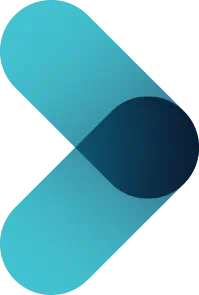GIVE NOW before 2025 ends—your gift will be doubled to help children in need. Click here to 2x your impact!

Ranked nationally in pediatric care.
Arkansas Children's provides right-sized care for your child. U.S. News & World Report has ranked Arkansas Children's in seven specialties for 2025-2026.

It's easier than ever to sign up for MyChart.
Sign up online to quickly and easily manage your child's medical information and connect with us whenever you need.

We're focused on improving child health through exceptional patient care, groundbreaking research, continuing education, and outreach and prevention.

When it comes to your child, every emergency is a big deal.
Our ERs are staffed 24/7 with doctors, nurses and staff who know kids best – all trained to deliver right-sized care for your child in a safe environment.

Arkansas Children's provides right-sized care for your child. U.S. News & World Report has ranked Arkansas Children's in seven specialties for 2025-2026.

Looking for resources for your family?
Find health tips, patient stories, and news you can use to champion children.

Support from the comfort of your home.
Our flu resources and education information help parents and families provide effective care at home.

Children are at the center of everything we do.
We are dedicated to caring for children, allowing us to uniquely shape the landscape of pediatric care in Arkansas.

Transforming discovery to care.
Our researchers are driven by their limitless curiosity to discover new and better ways to make these children better today and healthier tomorrow.

We're focused on improving child health through exceptional patient care, groundbreaking research, continuing education, and outreach and prevention.

Then we're looking for you! Work at a place where you can change lives...including your own.

When you give to Arkansas Children's, you help deliver on our promise of a better today and a healthier tomorrow for the children of Arkansas and beyond

Become a volunteer at Arkansas Children's.
The gift of time is one of the most precious gifts you can give. You can make a difference in the life of a sick child.

Join our Grassroots Organization
Support and participate in this advocacy effort on behalf of Arkansas’ youth and our organization.

Learn How We Transform Discovery to Care
Scientific discoveries lead us to new and better ways to care for children.

Learn How We Transform Discovery to Care
Scientific discoveries lead us to new and better ways to care for children.

Learn How We Transform Discovery to Care
Scientific discoveries lead us to new and better ways to care for children.

Learn How We Transform Discovery to Care
Scientific discoveries lead us to new and better ways to care for children.

Learn How We Transform Discovery to Care
Scientific discoveries lead us to new and better ways to care for children.

Learn How We Transform Discovery to Care
Scientific discoveries lead us to new and better ways to care for children.

When you give to Arkansas Children’s, you help deliver on our promise of a better today and a healthier tomorrow for the children of Arkansas and beyond.

Your volunteer efforts are very important to Arkansas Children's. Consider additional ways to help our patients and families.

Join one of our volunteer groups.
There are many ways to get involved to champion children statewide.

Make a positive impact on children through philanthropy.
The generosity of our supporters allows Arkansas Children's to deliver on our promise of making children better today and a healthier tomorrow.

Read and watch heart-warming, inspirational stories from the patients of Arkansas Children’s.

Hello.

Arkansas Children's Hospital
General Information 501-364-1100
Arkansas Children's Northwest
General Information 479-725-6800


Student-Athlete Centered Sports Medicine Care: A Team Approach
Published date: November 12, 2021
Updated date: May 23, 2024
A sports medicine physician at Arkansas Children's Northwest (ACNW) shares how Arkansas Children's pediatric Sports Medicine Program provides comprehensive care to athletes on and off the field.
Achieving the highest safety goals and the best quality of care for student-athletes is most effective when a full sports medicine team is available. Athletic trainers, sports medicine physicians and surgeons act together as a team, managing the athlete’s physical therapy, medical, orthopedic and surgical care.
Sports medicine at Arkansas Children’s is a circle of concentric rings, like a dartboard. At the center is the student-athlete. The next ring is a certified athletic trainer, our sports medicine physicians, and sports orthopedic surgeons. The outer rings include specialized physical therapists, various subspecialty physicians and surgeons.
The Role of the Athletic Trainer
The goal of the athletic trainer on the sports medicine team is to get the student-athlete back on the court, field or track as quickly and safely as possible. Athletic trainers are educated in general medical evaluation, first-aid and first-response care, such as CPR and medical assessment, and have a robust orthopedic skillset. Often, musculoskeletal injury rehabilitation is treated under the guidance of an athletic trainer. This care includes high-quality therapy and rehab that can save the patient time and money.
Throughout the day at Arkansas Children’s, we connect with athletic trainers regarding student athletes’ medical needs and either immediately address them or get the student-athlete seen the same day or first thing the next morning for a complete evaluation. The most common requests range from scheduling physical exams and coordinating care with specialists to X-rays and arranging follow-ups. Overall, athletic trainers are an important school resource on the front line to assist parents and student-athletes with coordinated care.
-
A few examples of coordinated care at Arkansas Children’s include:
- One week into full-contact practice, a football player took a hit while trying to make a tackle and dislocated his shoulder. Our athletic trainer used their knowledge of musculoskeletal care to reposition the shoulder into the socket. With the parents’ permission, the athlete was seen the next morning by the sports medicine physician, who ordered an MRI, which showed a cartilage tear of the shoulder. The sports medicine specialist and shoulder specialist reviewed the MRI and recommended a surgical consult.
- A high school volleyball team was on the road in Oklahoma, and the setter took a ball to the nose when going up for a block at the net. Upon examination, she had a noticeable deformity of the nasal bridge. The athletic trainer called the sports medicine physician during the game and coordinated with an ENT surgeon for an evaluation, with parents’ approval, the following day. The athlete was immediately seen and treated by the appropriate specialist without multiple referrals to different physicians.
- A cross-country runner who had transitioned to indoor track told her athletic trainer that she’d had right shin pain for the past few weeks. Initially, her athletic trainer treated her conservatively with rehab and physical therapy and put her in a tall walking boot. Over the next couple of weeks, the athletic trainer determined the athlete hadn’t made as much improvement as he’d hoped for, so he called the sports medicine physician suspecting a stress injury of the shin bone. The athlete was seen the same day, and the sports medicine physician confirmed the athletic trainer’s suspicion. An MRI confirmed a distal posterior medial tibia stress injury (shin splints) – common in a distance athlete. With the parents’ approval, the athletic trainer and sports medicine physician coordinated care with specialists, including a sports nutritionist, physical therapist and biomechanical specialist. This coordinated care not only helped with the athlete’s immediate symptoms but prevented them from reoccurring. The care was then transitioned back to the athletic trainer.
In these examples, the schools’ certified athletic trainers served as the first-line medical providers by handling the majority of the student athletes’ medical or musculoskeletal needs, enabling them to participate in their sports safely. A school athletic trainer is an important resource for medical knowledge, especially for student-athletes who don’t have the benefit of regularly (if ever) visiting with medical specialists. They serve as advocates for their students’ healthcare needs, guiding them to the appropriate specialist or resource or helping them rehabilitate. Likewise, sports medicine physicians are fortunate to have school athletic trainers to serve as their connection for communication and medical needs of student-athletes.
The future of sports medicine care is transitioning to this coordinated model, with comprehensive student care being the highest priority. Arkansas Children’s goal is to streamline communication among student-athletes and their families. The athletic trainers serve as the best liaison between the athlete and their team of physicians, surgeons, physical therapists, and other specialists.

Appointments
New and existing patients can visit our appointment hub for several ways to request an appointment, including online scheduling for many services.
Request an appointment

